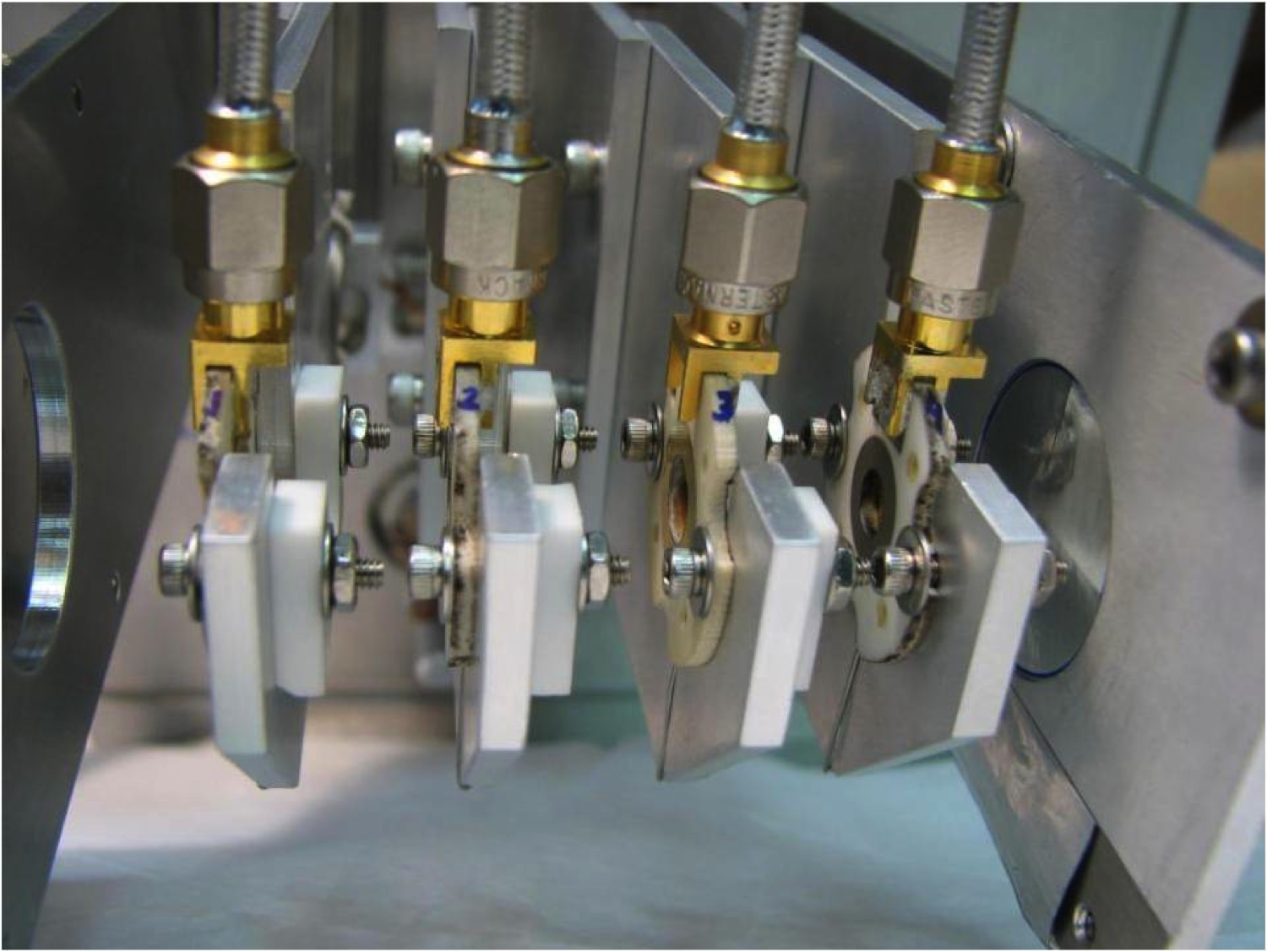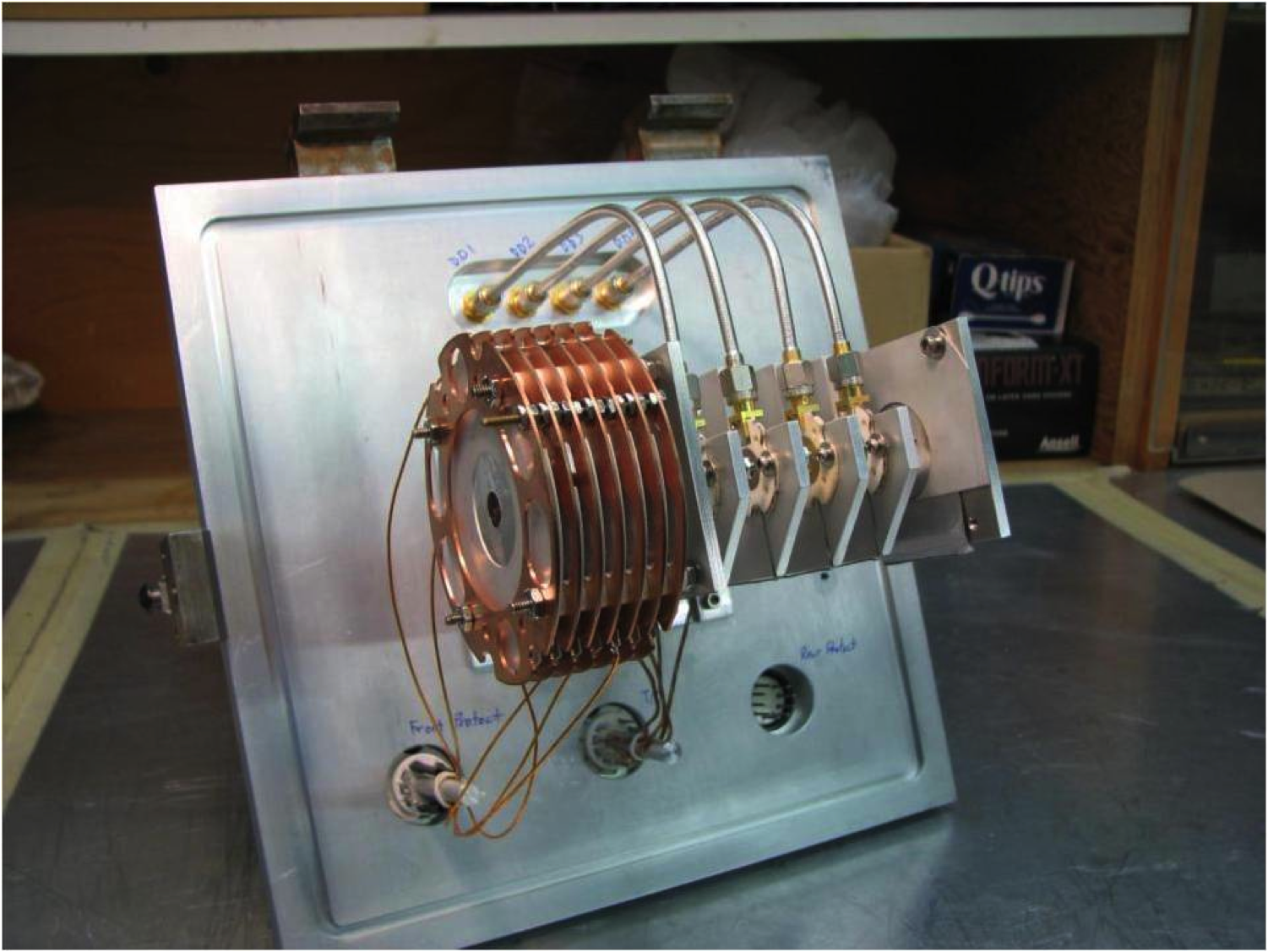Particle physicists from the ATLAS groups at Carleton, Montreal, Toronto, Victoria, and TRIUMF have confirmed that diamond detectors can withstand the impact of 1017 protons per square centimetre. This is relevant to the High-Luminosity Large Hadron Collider (HL-LHC), a proposed upgrade to the LHC for 5-10 years from now, which would increase current luminosity (the rate of proton collisions) by a factor of 10 to improve statistical measurements and help uncover rare high-energy processes. These tests were conducted at the Neutral Beam Irradiation Facility (NBIF) in the TRIUMF cyclotron vault from May 1 to August 1, 2010, and in TRIUMF Beam Line 1A (BL1A), one of TRIUMF’s main beam lines, in the first two weeks of September.
 The current goal of the ATLAS experiment at the Large Hadron Collider (LHC) is to reveal the Higgs Boson to particle physicists; the Higgs is a particle thought to determine the masses of all other particles and would complete the Standard Model of physics. Future development of the ATLAS project, however, depends on an upgrade to its Forward Calorimeters (FCal). A calorimeter is a device that measures the released heat of chemical reactions. In ATLAS, the calorimeters measure the energy of charged particles passing through by stopping them and converting all of the kinetic energy into detectable forms such as electric currents, light or heat. Because of the intense radiation from the LHC, these devices must be “radiation-hard” (i.e., deliver constant or predictable performance after exposure to large radiation doses). Currently, the LHC can run at a luminosity of up to 1034 protons per square centimetre per second, but beyond this, the FCal may experience problems. These include charge build-up in the liquid argon gap, heating of the argon due to the beam that may exceed the boiling point of the liquid, and other issues.
The current goal of the ATLAS experiment at the Large Hadron Collider (LHC) is to reveal the Higgs Boson to particle physicists; the Higgs is a particle thought to determine the masses of all other particles and would complete the Standard Model of physics. Future development of the ATLAS project, however, depends on an upgrade to its Forward Calorimeters (FCal). A calorimeter is a device that measures the released heat of chemical reactions. In ATLAS, the calorimeters measure the energy of charged particles passing through by stopping them and converting all of the kinetic energy into detectable forms such as electric currents, light or heat. Because of the intense radiation from the LHC, these devices must be “radiation-hard” (i.e., deliver constant or predictable performance after exposure to large radiation doses). Currently, the LHC can run at a luminosity of up to 1034 protons per square centimetre per second, but beyond this, the FCal may experience problems. These include charge build-up in the liquid argon gap, heating of the argon due to the beam that may exceed the boiling point of the liquid, and other issues.
To address these issues, ATLAS  plans to install a ‘Mini’ FCal with a new design for shielding in front of the existing Forward Calorimeters. The new design will consist of a ceramic disc covered with rings of detectors made of synthetic diamond. Although diamond is an electrical insulator, it can be used in much the same way as silicon and other semiconductor devices. At the same time, diamond is an excellent thermal conductor. The concern with using the diamond material was that it was unknown whether it would experience radiation damage with fluences above the 1017 protons per cm2 level that would be reached after ten years at ten times the original design luminosity.
plans to install a ‘Mini’ FCal with a new design for shielding in front of the existing Forward Calorimeters. The new design will consist of a ceramic disc covered with rings of detectors made of synthetic diamond. Although diamond is an electrical insulator, it can be used in much the same way as silicon and other semiconductor devices. At the same time, diamond is an excellent thermal conductor. The concern with using the diamond material was that it was unknown whether it would experience radiation damage with fluences above the 1017 protons per cm2 level that would be reached after ten years at ten times the original design luminosity.
Diamond has long been thought to be very radiation hard, and this is supported by results of two weeks of beam tests at TRIUMF. This level of radiation hardness is necessary for forward calorimeters that will be needed for future development of the ATLAS experiment at the LHC in five to ten years. After the rigorous testing of diamond detectors, physicists are confident that diamond will meet the needs of the upgraded LHC, which will then be able to operate at an even higher luminosity needed to continue exploration for physics beyond the Standard Model.
Additionally, these tests have given the world new knowledge of the highly useful properties of diamond. These tests were only possible at TRIUMF because of the main cyclotron and its versatile design; no other facility in the world could provide a similar environment for these studies.
“These tests break new ground for the promising technology of radiation-hard diamond sensors,” said Isabel Trigger, team leader of the TRIUMF ATLAS group. “And a number of ingenious people at TRIUMF have already thought of in-house practical applications for the sensors - so they should find lots of uses long before they are needed at the LHC!”
--Jessica Coccimiglio, Communications Assistant
